astronomy
Celestial gatherings
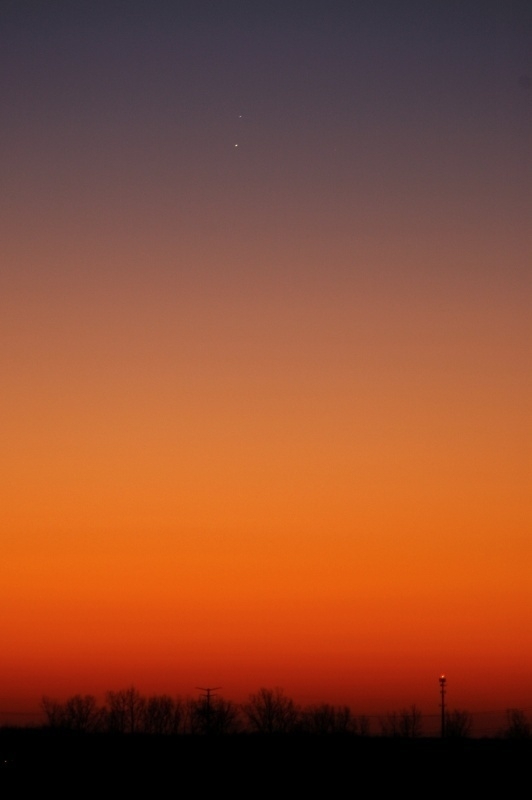
Early morning on Dec. 10, 2006, there were two groupings of celestial objects worth noticing. Jupiter was close (within 1 deg.) to Mars and Mercury. Jupiter and Mercury are clearly visible in the picture above. Click on the link below to see a closeup with longer exposure and legend. This was my first ever Mercury sighting. I was very happy about that. I can tick off that one thing from my lifetime-to-do list.


Moon was very close (within 1 deg.) to Saturn. I remember seeing a Saturn occultation a few years ago which was very cool.

Saturn in M44
Lately, Saturn has been sitting in the constellation of Cancer. Last night, I took this photo with my 80-300mm zoom lens to capture Saturn and the Beehive cluster, M44 from Cancer. Few days ago, Saturn was even closer to the cluster, but I couldn’t view it due to clouds. Because of its retrograde motion, Saturn will come closer to the cluster again later in the year.
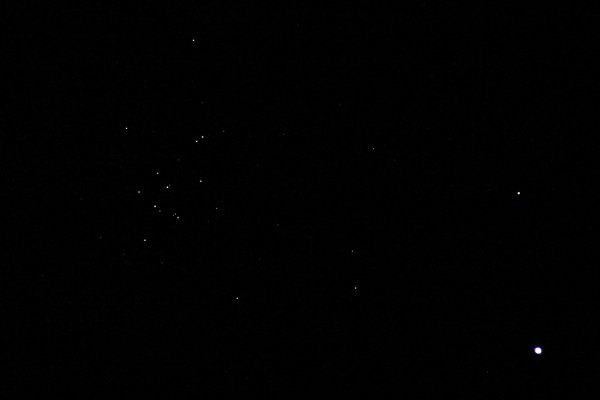 Nikon D70; 80-300mm at 250mm; f/5.6; 1 sec
Nikon D70; 80-300mm at 250mm; f/5.6; 1 secCenter of the Milky Way
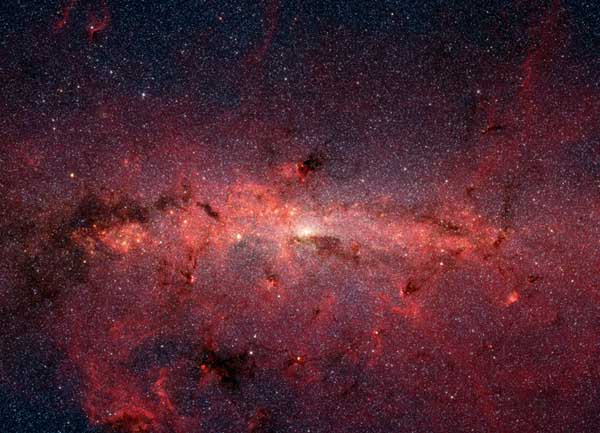
Have you ever wondered how our own galaxy, Milky Way, looks like? On a dark night, one can make out a swatch of shimmering cloud like Milky Way go across the sky. But, we can’t see the center of the galaxy which is supposedly dense with stars and should be very bright. Our view of the center is obscured by clouds of gas and dust that is part of our galaxy. The image above is a mosaic of photos showing the center of the Milky Way, taken by Spitzer Space Telescope’s infrared cameras. Click here for a higher resolution photo. The galactic center lies towards the constellation, Sagittarius and is about 26,000 light years away. We, in our solar system, truly live on the outer fringes of the galaxy.
Just think about it… Even at the speed of light, it will take us a lot more time than the period of documented human history on Earth, to reach the center of our own galaxy. There are many many billions of such galaxies in the Universe. Feel insignificant? Good. Remember that feeling next time you agonize and cry about your small little problems.
via, APOD
Evening sky...
It was a beautiful evening sky today. Venus, Moon and Jupiter came together close to create this spectacular view. If you missed it, try again on Wednesday evening. The configuration will be different but, they will still be pretty close to each other.
The sky was clear except for the southwest sky where these interesting objects were. I managed to get a couple of nice photos even with the clouds.
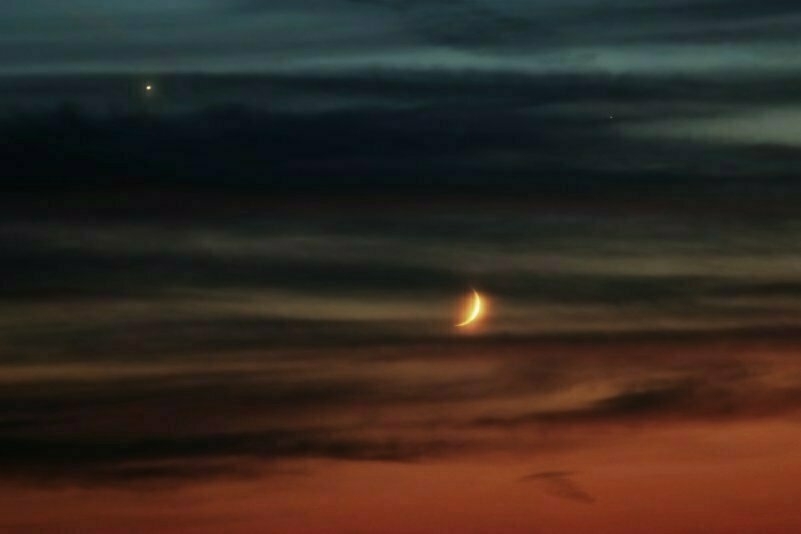
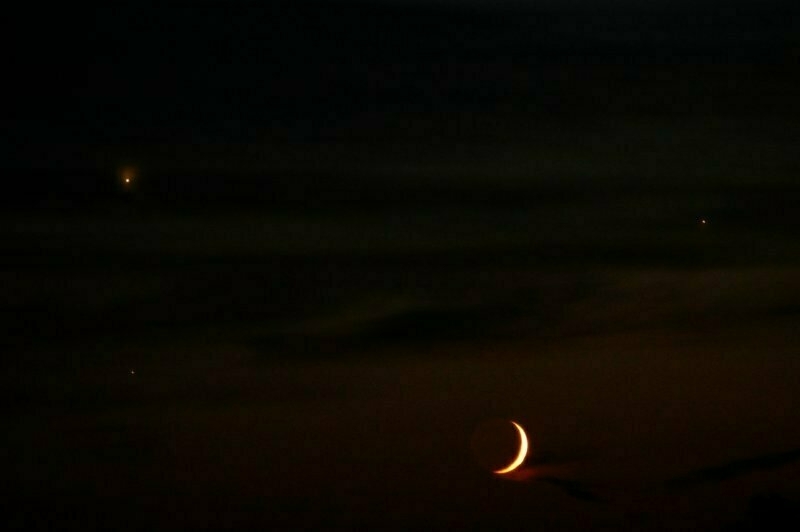
The objects in the photo are (clockwise starting from the Moon): Moon with earthshine, Spica (Chitra), Venus and Jupiter.
Perseids 2005
Early morning of Aug. 12th is going to be the peak for 2005 Perseid meteor showers. I missed last year’s show because of cloudy skies and the weather forecast predicts clouds for tonight too. I am still going to wake up early and catch a few shooting stars tomorrow morning. Hope you have clear sky wherever you are to enjoy the show.